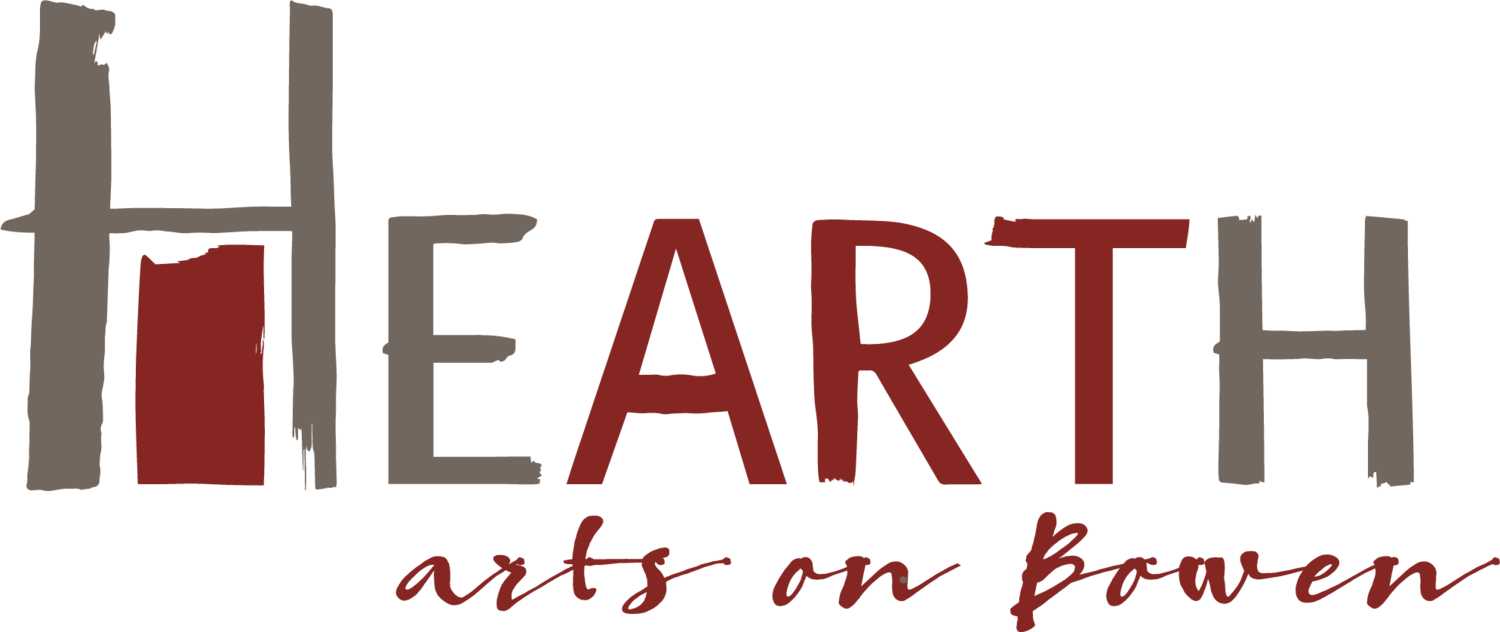
TEXADA
BY Claire Sanford and Josephine Anderson
Opens at the Hearth gallery, November 19th - 30th
OPENS Nov 19th - 30th
TEXADA
How big is time?
On the remote Canadian island of Texada, the everyday stuff of human existence—work, play and dreams—is juxtaposed against the tectonic shifts of the planet, rising and falling in cyclical patterns of creation, extinction and renewal.
In this impressionistic VR project, co-directors Claire Sanford and Josephine Anderson merge 360-degree live-action footage, captured across the island, with 3D animation of geologic upheaval to create an immersive, poetic experience. A chorus of residents’ voices ebbs and flows, unravelling the complexities of the surrounding limestone that is central to the community and economy of the island. Present in everything from toothpaste to the great Pyramids of Egypt, this humble yet ubiquitous rock is a critical element in the construction of our modern society.
Texada is about rocks, people and time—the head-spinning vastness of terrestrial epochs contrasted with the immediacy of day-to-day human experience. Real and imagined landscapes document a journey from the Earth’s formation to the current moment: twinned streams of existence mixing and mingling in an ever-changing flow. As geologic forces continue to unfold, the only constant is transformation. Yet amongst the great heave of history, glimpses of temporal beauty, like discovering beautiful stones on a beach, help us understand our place in the universe.
Please join us for our artist party, Saturday Nov 22nd, 6-8pm
TEXADA
By Claire Sanford and Josephine Anderson
TEXADA VR | Artist Statement
As artists, we are both deeply driven by a fascination with crafting stories rooted in the real world, a passion that has led us to a focus on documentary storytelling. Over the course of our careers, we have continually gravitated toward pushing the boundaries of the documentary form, seeking new ways to experiment, take risks, and challenge the limits of our craft.
When a serendipitous meeting brought us together, the connection between us as creative collaborators was immediate and undeniable, though the specific project we would embark upon was yet to be defined. What united us from the start was a shared desire to explore uncharted territories. As collaborators we have played many roles – co-directors, co-writers, and director/cinematographer – yet each role has been inextricably intertwined with the other, reflecting our deep commitment to collaborative process.
As we moved forward with a project that would reflect our evolving creative partnership, we found ourselves captivated by big, philosophical questions that have guided us throughout our lives: How do we define meaning through the way we spend our time and the work we do? What are the connections we form with the places we inhabit, and how are they expressed? What influences the memories we create and hold onto? How do we grapple with our place in the universe?
At the same time, we became captivated by emerging technologies, particularly the potential of 360-degree filmmaking. As we dove into experimentation, we found that the immersive nature of the medium aligned perfectly with the big questions we sought to address. The challenge of working with 360-degree film became an opportunity to craft a narrative that was both expansive and intimate, giving us the space to reflect on time, memory, and place through the lens of a technology that was still evolving and uncharted.
This exploration led us to Texada, an impressionistic virtual reality experience that merges 360-degree live-action footage of the island with 3D animation to explore geologic transformation. The result is a poetic and immersive journey that spans hundreds of millions of years, through grand cycles of extinction and renewal. At the same time, it is deeply rooted in the present, on the island of Texada where limestone, a remarkable and ancient material, is mined.
Limestone, once composed of the bodies and bones of ancient life, forms over millions of years. It is an enduring record of the past, and today it plays an integral role in the modern world, from the concrete that shapes our cities to the fertilizers, glass, rubber, paint, and even toothpaste we use in our daily lives. In creating Texada, we came to realize that limestone is not just a building block of society, but an archivist of human information. When given space to tell its own story, limestone holds memories, histories, and deep narratives – both geological and human. Our goal was to give this material a voice, to allow it to come alive in its own right.
In Texada, we have sought to explore the intersection of time, place, and memory through the lens of a landscape shaped by both natural forces and human intervention. The project is a meditation on the forces that shape us, from the geological to the personal, and an invitation to reflect on the ways in which we define meaning in our lives.
About the Artists:
Josephine Anderson
Josephine Anderson is a Bowen Island-based documentary filmmaker who works across the documentary and interactive formats to address themes like time, irreverence and female experience. Josephine’s work has screened at international festivals, including Tribeca, Hot Docs, and IDFA, and has been presented by The New Yorker Documentary, Vimeo Staff Picks, CBC, the Canada Council for the Arts. More at: www.josephineanderson.ca
Claire Sanford
Claire Sanford is a Canadian documentary filmmaker originally from Texada Island, BC. As a cinematographer and video artist, her work explores the natural world, human identity and how they overlap. Claire’s projects have been exhibited internationally at film festivals and galleries, including IDFA, DOC NYC, Hot Docs and TIFF’s Canada’s Top Ten, and on online platforms such as Vimeo Staff Picks.
More about Texada VR: https://www.josephineanderson.ca/work#/texadavr/
Q+A with Claire Sanford and Josephine Anderson
How do you think your documentary backgrounds meld with the video art aspects of your show?
We are both filmmakers whose practices are rooted in the documentary form, and it's a form that we are both very committed to. There is a real beauty and responsibility in crafting stories using the real world and peoples' lives as your palette, and we've both been drawn to exploring and expanding the form of documentary throughout our careers. When we started working together on the project that would become Texada, something that was really appealing to us was the challenge of crafting story in a new medium, one which we weren't familiar with and which pushed us to expand our practice of what documentary was. We learned how to create in VR together, and I think our grounding in documentary gave us a language to work with even as we pushed at the boundaries of the form and our own creative comfort! Today, we are both working on projects whose forms are non-traditional in the documentary field. Josephine is creating audio documentary work, and Claire is creating multi-channel video and interactive immersive work. The instinct to work in new mediums and forms is something that I think was partly inspired by our experience working together on Texada.
What would you say are the main themes you choose to explore?
We approached the creation of Texada knowing that we wanted to explore what was special and unique about this place. Ultimately it came down to this very important, ubiquitous, but also quite ordinary rock - limestone. Limestone is used in so many of the products and infrastructure we take for granted - from roads and buildings to paint, glass, rubber, food... It really felt like the unsung hero of the project, and we wanted to see what themes it revealed as we dove in. A major thematic exploration in the work is the experience of human time vs. geologic time, which is so nicely wrapped up in the life cycle of limestone. Today, Texada Island hosts limestone mines which are the main economic driver of the island, facilitating the meaning-making that we do as humans. This rock holds the stories of the people who interact with it everyday, from mine workers to children playing on the beach - while at the same time the deeper stories are much older, stemming from its formation from the shells and bones of creatures that were living hundreds of millions of years ago. Contrasting the tiny dot of human time within the giant expanse of geologic time left us with a sense of awe, and we found a deep beauty in the contradictions that emerged - that how we spend our time as humans is so important and meaningful, and yet so small and meaningless in the face of the vastness of geologic time.
Why did you choose VR as your delivery method?
We came together as artists because we shared a desire to play with VR, and neither of us had worked in virtual reality before. Previously we had mainly worked in more traditional linear documentary filmmaking. We felt drawn towards the satisfaction and fun of pushing our limits as storytellers. It started as a creative experiment for us.
We felt VR was the perfect medium for TEXADA in particular because pulling out our cameras and just filming in the present moment somehow felt limiting. Our project is really about the collision of “human time” — that is, the sense of time we all live with day to day, as we go about our lives — and geologic time, which is so huge it’s almost unfathomable. How can we humans find meaning and purpose, when we take into account how tiny our lives are in the grand expanse of time? Working in virtual reality enabled us to mess with people’s sense of control and reality, and evoke much more imaginative thinking.
Did you create the animation portions yourselves or they more found footage?
Neither! We filmed all the 360 live action scenes ourselves, but we worked with the very talented team at Charm Games to create the animations. The art was directed by Will Phillips, with technical direction by Matt Austin. The animation process was pretty mind blowing. We worked for months developing storyboards, and then many more months refining the animations, which are complex with many layers. We wanted to create a world that is rooted in geology, and yet is also fluid and painterly — a world where every “rock” you see is constantly in motion. Because we designed the project for a mobile headset (the Meta Quest 2), rather than a tethered, beefier headset, we were constantly running up against its limitations. We’d iterate some animation and export a new build, and then the project would crash, or the animation would appear all skewed, because we were trying to jam so much information into each animation. So it was a real long and complicated process, but we’re thrilled with how the animations turned out.


